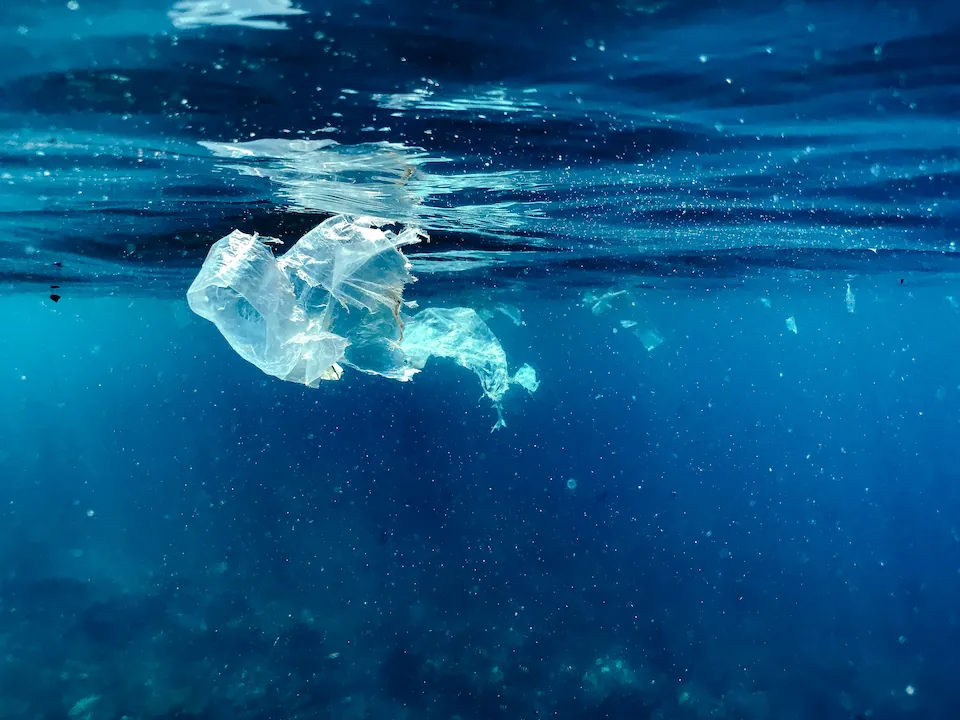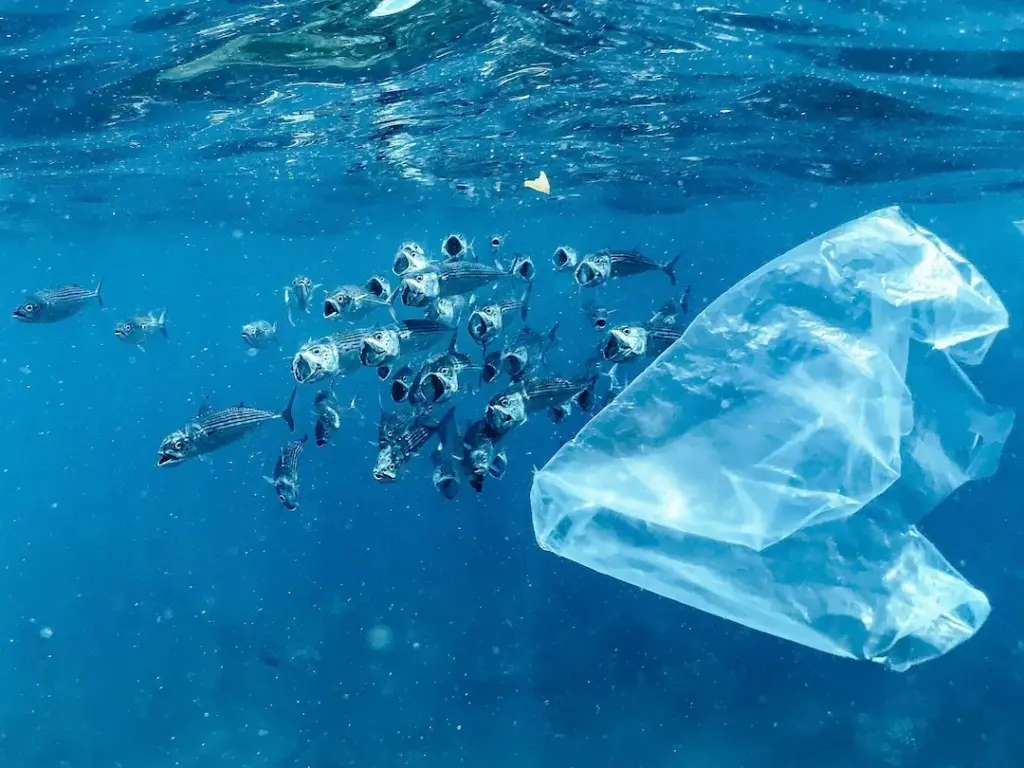 Traceability and Circular Economy
Traceability and Circular Economy

When you picture plastic in the ocean, you might imagine bottles, bags, or fishing gear floating on the surface, drifting out to sea. But new research by Kate Spencer and Nan Wu from Queen Mary University of London shows the reality is far more complex and far more persistent.
Even if all plastic pollution stopped today, large floating fragments would still linger at the surface for more than a century. These fragments gradually break down, releasing microplastics that sink through the water column at an incredibly slow rate. The result is a natural conveyor belt of pollution that connects the ocean’s surface to its deepest layers¹.
The missing plastic puzzle
Scientists have long been puzzled by the gap between how much plastic enters the ocean and how much remains floating on the surface. The new model developed by Spencer, Wu, and their team provides a powerful explanation.
Large pieces of plastic do not simply sink or vanish. They slowly fragment over decades and eventually become small enough to attach to tiny organic particles known as marine snow. This sticky matter acts as a vehicle, carrying plastic fragments down to the seafloor².
Key findings from the study:
- Even after 100 years, about 10 percent of the original plastic material could still remain at the surface¹.
- Large buoyant plastics degrade slowly under sunlight and wave action, releasing micro and nano-sized fragments².
- Once small enough, these fragments attach to suspended organic matter and begin sinking³.
How the model works
Spencer and Wu’s computer model connects how buoyant plastics break apart with how they move through the water column. It simulates the interaction between degradation, marine snow attachment, and ocean currents².
Core elements of the model include:
- Degradation: Floating plastic exposed to sunlight, waves, and microbial colonization weakens and fragments.
- Attachment: Once fragments reach a small enough size, they can stick to organic particles.
- Sinking: These particle-plastic clusters gradually fall to deeper layers, effectively transporting pollution downward.
Even with zero new plastic entering the ocean, the study predicts that surface pollution would continue to persist for centuries².
Implications for the planet

- Persistent pollution: The research shows that legacy pollution is the main driver of future microplastic generation. Even without new inputs, plastics already at sea will keep fragmenting for generations³.
- Deep ocean link: The study confirms that surface plastics are part of a global transport system that extends into the deep sea. What disappears from view does not disappear from the planet¹.
- Threat to the biological pump: The ocean’s natural system for storing carbon, known as the biological pump, could be affected by microplastics attaching to marine snow. This might reduce its efficiency, influencing climate regulation and marine life health².
- Long-term challenge: Since removal timescales extend beyond a century, the only viable solution lies in prevention. Cleanup efforts must be supported by policies that reduce plastic production, improve design, and address waste at every stage of its life cycle³.
What this means for our response
The findings reinforce a crucial truth: we cannot clean our way out of this problem.
To truly protect our ocean and climate, we must:
- Focus on prevention first by cutting single-use plastic production.
- Incentivize collection in impoverished areas with high pollution to stop plastic from leaking into the environment. .
- Design smarter materials that break down safely or can be endlessly reused.
- Monitor the deep ocean to understand where plastic ends up, not just what floats.
- Integrate climate and waste policies since plastic now directly affects the ocean’s carbon cycle.
Conclusion
This study changes how we see plastic pollution. It is not just about floating bottles or drifting debris. It is a slow, continuous transformation that turns large fragments into microplastics, linking the surface to the deep ocean in a cycle that can last for centuries.
Even if plastic waste stopped flowing into the sea today, the ocean would remain burdened with the legacy of past pollution. The only sustainable solution is to act at the source, reducing production, redesigning materials, and rethinking consumption.
The ocean connects everything. What floats today will one day sink, fragment, and resurface in new forms. The responsibility is ours to make sure what we leave behind causes no further harm.
—
Sources:
- Phys.org, “Plastic pollution could linger at ocean surfaces for over a century, new research finds,” Phys.org, October 23, 2025, https://phys.org/news/2025-10-plastic-pollution-linger-ocean-surfaces.html
- Nan Wu, Samuel Grieve, Andrew Manning, and Kate Spencer, “Coupling fragmentation to a size-selective sedimentation model can quantify the long-term fate of buoyant plastics in the ocean,” Philosophical Transactions of the Royal Society A, June 4, 2025, https://royalsocietypublishing.org/doi/pdf/10.1098/rsta.2024.0445
- Scienmag, “New study reveals plastic pollution can persist on ocean surfaces for over a century,” Scienmag, October 23, 2025, https://scienmag.com/new-study-reveals-plastic-pollution-can-persist-on-ocean-surfaces-for-over-a-century



 Continue with Google
Continue with Google


